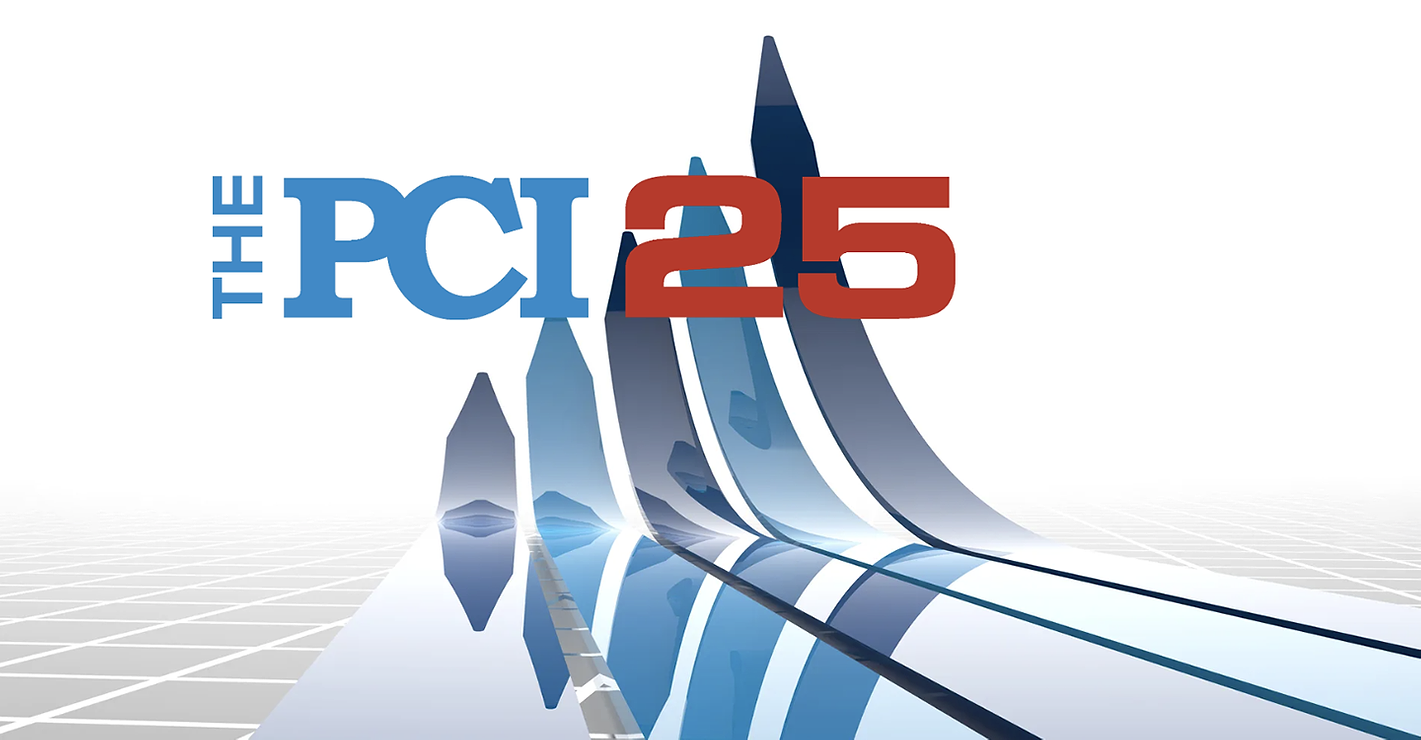Modern Metallics
Metallic appearances are accomplished by the use of special effect pigments such as aluminum, bronze, zinc, stainless steel or pearlescent micas. These pigments are combined with base powders by various techniques - including extrusion, dry blending and bonding - to produce the finished special effect powder coating.
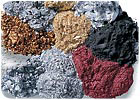
Over the past 35 years, powder coatings have grown from a laboratory curiosity to a major force in the industrial coatings market. With this growth, the demand for options beyond simple, solid colors and clears has experienced a significant upsurge. Metallic appearances have been accomplished by the use of special effect pigments such as aluminum, bronze, zinc, stainless steel or pearlescent micas. These pigments are combined with base powders by various techniques - including extrusion, dry blending and bonding - to produce the finished special effect powder coating. Each technique has inherent advantages and disadvantages.
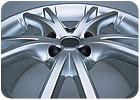
Some of the harder metallic flakes, like stainless steel and bronzes, are more successful in surviving the powder coating manufacturing process and can be used for a “sparkle” effect. Frequently aluminum and mica pigments are used in the premix to provide certain color effects and/or to reduce the level of the post blended materials when used in conjunction with dry blending or bonding techniques. The application properties of powder coatings containing extruded metallic or mica materials are similar to non-metallic powders and introduce no application or reclaim problems.
Recently some metallic flake suppliers have developed materials specifically designed for extrusion processing. For example, Eckart POWDERSAFE® is a new range of pelletized gold-bronze and aluminum pigment preparations developed for the direct extrusion into powder coatings. These pellets are added at the premix stage with the other raw materials, followed by extruding and grinding. The product allows for the production of metallic powder coatings without additional processing steps like dry blending or bonding. This material is supplied in a soft granule form with typically 80%, 85% or 90% metal pigment content. The typical pigmentation rate varies between 2 to 10%, depending on the effect desired.
Silberline’s Silvet® technology is designed to provide improved handling, dispersion and compatibility in the extrusion of powder coatings. Metallic powder coatings produced with these products minimize the “picture frame” effect and offer recyclability and penetration into recessed areas. The aluminum pigments are carried in a polymer compatible with epoxy, hybrid, polyester, polyurethane and acrylic powder coatings. The granule form consists of 70 to 80% aluminum pigment, with the remainder a coating resin carrier. The pigments can produce “bright sparkle” as well as “hammer” and “leafing” finishes.
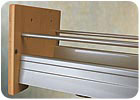
Dry blending metal and pearlescent pigments presents application and reclaiming difficulties. The differences in the electrical properties and particle size of the base powder and metal result in greatly different charge acceptance. The same powder can develop a range of colors and appearances caused by variations in gun voltage, film thickness, gun to part distances, air currents in the spray system, etc. This effect can be especially noticeable on flat areas, where a blotchy appearance can occur because of separation of the dry blended pigments.
Dry blended metallic and pearlescent powders also tend to build up on gun parts and “spit,” resulting in lumps of material in the finish. Dry blended aluminum powders can have catastrophic application properties when the level of aluminum is greater than 5%. It is possible for free aluminum or other metallic pigments to coat the powder hose from the gun back to the venturi, which subsequently grounds the electrostatic charge. The powder will not receive a charge and will not adhere to the article being coated. This phenomenon is sometimes called “backtracking.” If color and appearance are critical properties, dry blended powders might not be the best option. These problems are minimized as the level of dry blended material is reduced.
The contrast in electrical properties between the base powder and the metal or pearlescent pigments also leads to excessive levels of separation during electrostatic application. The reclaim generated contains a different ratio of aluminum (or other metallic and/or pearlescent material) than the virgin powder, resulting in a different color and appearance. This difference makes the reclaim almost impossible to use. (Reclaiming and using overspray is one of the most important advantages of using powder coatings.) If the metallic powder is not reclaimed, then this problem is not encountered.
The chief benefit of dry blending is that it is a low-cost method of making a metallic powder coating. For this reason, despite the problems, many dry blended metallic and/or pearlescent pigments are being used. Many of the applications are small volume operations in which the reclaiming process is not utilized. Others contain very low levels of dry blend, which minimizes the problems. Still others are situations that are less critical for color and appearance.
The aluminum pigments used for dry blending are supplied with some modification for safety, usually an inorganic or organic coating. This coating is sometimes promoted by powder coating manufacturers as providing characteristics similar to “bonded” powders. However, the coating on the aluminum flake typically has an insignificant effect on the electrical properties when the pigments are used as a dry blend in a powder coating. While the coating does improve safety during the manufacture of the aluminum and handling the neat aluminum, this fact benefits the powder coating manufacturer rather than the powder coating user. Other techniques to make the neat aluminum safe to handle sometimes result in a material that is too “sticky” to dry blend, which limits the pigments’ use to other methods of incorporation.
There are new metallic pigments available that contain higher levels of coating and are made especially for dry blending. These coatings are similar to the resins used in powder coatings. Likewise, there are new developments in pearlescent mica pigments to improve the properties when dry blended with powder coatings. The goal of both of these developments is to minimize the ill effects of dry blending as the levels are increased. The powder coating industry is currently evaluating these materials for their value.
One example is Silberline’s SilberCote PC Grade line, in which the aluminum flake is coated, either with an organic or inorganic coating, to improve upon the problems of explosion risk, spray application, recycling, aesthetics and durability associated with uncoated aluminum flake. One advantage of coated aluminum flakes is that it lowers the specific gravity of the pigment so that it is closer to that of the powder coating resin. This results in a more uniform overspray, with less separation of the flakes from the resin. In addition, Silberline claims that the coating makes the pigment less conductive in an electrostatic field and improves spray characteristics. These coated aluminum products are normally derived from higher purity aluminum; the higher purity provides brighter aesthetics and better humidity and chemical resistance versus uncoated aluminum flakes.
Eckart’s PHOENIX® XT pearlescent pigments are weather-resistant effect pigments especially designed for powder coating applications. These pearlescent pigments consist of thin platelets of natural mineral mica coated with a thin layer of metal oxide, e.g., titanium dioxide (TiO2). The pigments are designed to provide extraordinary weather resistance by means of a stabilization process that is tailored to each pigment. During this stabilization process, the silver white pearlescent pigments are coated with a metal oxide layer. The pigment range includes five pigment grades for the formulation of a variety of optical effects, from silky gloss to crystalline sparkling. The advantages of these pearlescent pigments are their weather resistance, high color strength, good electrical charging, easy processing with Corona and Tribo techniques, good abrasion resistance in single coat powder coatings, and good shear stability – which makes them suitable for processing with bonding technique. The typical pigmentation rate of the pearlescent pigments varies between 1.0 and 5.0%
Toyal America’s Polymer Coated Flake (PCF) pigments also have been specifically designed for the powder coating industry and have gained wide acceptance in the field. These products feature superior clarity, appearance and performance characteristics, yielding pigments that meet a variety of styling needs. The PCF series features a fully crosslinked acrylic resin shell around each flake. This coating allows the particle to acquire the charge necessary for high transfer efficiencies and improves the pigment’s acid and alkali resistance.
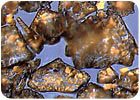
Bonding is a process in which the base powder is heated to its softening point. A base powder is like other powder coatings, but it is formulated to obtain the desired metallic appearance. It can be composed of any generic chemistry. The softening point temperature is at or very close to the glass transition temperature (Tg) of the binder of the base powder. The material to be bonded is added at the beginning or during the bonding cycle. To keep the powder particles from sticking together, the bonded mixture remains in motion during the bonding process and during the cooling cycle. The bonded metallic powder can be applied the same way as non-metallic powders.
During bonding, powder particles basically adhere to the metal flake. However, this description does not completely explain this phenomenon because the process would create particles too large for electrostatic spray. Metal and pearlescent pigments have somewhat similar particle size distributions to base powder. The key difference is that the metallic particle size distribution is much narrower. Simply adding particles together does not account for the performance of the finished product. Additionally, because of de-agglomeration of the base powder during the bonding process, the effective particle size of bonded powder is smaller than that of the base powder.
There are other transfers - known as “smears” - that appear as a layer of base powder on the metal flake. These smears cover a relatively large area. Powder particles have flowed on contact with the metallic particle or material has rubbed off the surface of a softened base powder particle. Still other examples show a metal particle embedded in a base powder particle. In this case, the powder particles are larger. The bonding process forms a physical mixture that has more uniform electrical properties.
Bonded powders can be applied with a more consistent appearance and color under a wide range of application parameters. The powder overspray can be reclaimed and reused without pigment separation. With a bonded metallic powder applicators can treat a “metallic powder coating” as a standard powder. Bonding is not perfect, but it is a big improvement over other methods of creating metallic pigments.
Bonded powder coatings mitigate the concerns some people have regarding the safe handling of aluminum containing metallic powders. The bonding process coats much of the aluminum with a significant amount of the base powder, essentially rendering the aluminum inert.
One drawback is that a lot of energy is used in the bonding process. This work bends and breaks some aluminum particles, which decreases the sparkle and brightness in color compared to dry blends of the same formulation.
Additionally, it is difficult to match a dry blend metallic powder with a bonded metallic. If an end user is developing a new color metallic powder that will eventually need to be bonded, it is important to develop the color standards using bonding, not a dry blend.

Metallic appearances have been accomplished by the use of special effect pigments such as aluminum, bronze, zinc, stainless steel or pearlescent micas. All photos courtesy of Benda-Lutz, Independence, KY.
Over the past 35 years, powder coatings have grown from a laboratory curiosity to a major force in the industrial coatings market. With this growth, the demand for options beyond simple, solid colors and clears has experienced a significant upsurge. Metallic appearances have been accomplished by the use of special effect pigments such as aluminum, bronze, zinc, stainless steel or pearlescent micas. These pigments are combined with base powders by various techniques - including extrusion, dry blending and bonding - to produce the finished special effect powder coating. Each technique has inherent advantages and disadvantages.

A metallic finish adorns an automotive wheel.
New Extrusion Options
The first attempt to create metallic powders was by adding metallic pigments to the powder premix prior to extrusion. This method met with limited success because in most formulas the brightness of the aluminum flake is destroyed from the shear of the extrusion process, resulting in a dull gray-colored powder coating with practically no sparkle. Pearlescent micas suffer the same fate as metallic pigments, in addition to being broken down in the grinding step of powder coating manufacture. In some epoxy powder systems, leafing aluminum pigments have been successfully incorporated through extrusion and have been commercialized. One of the largest successes of extruded metallics was the under-the-hood epoxy powders in the mid ’80s.Some of the harder metallic flakes, like stainless steel and bronzes, are more successful in surviving the powder coating manufacturing process and can be used for a “sparkle” effect. Frequently aluminum and mica pigments are used in the premix to provide certain color effects and/or to reduce the level of the post blended materials when used in conjunction with dry blending or bonding techniques. The application properties of powder coatings containing extruded metallic or mica materials are similar to non-metallic powders and introduce no application or reclaim problems.
Recently some metallic flake suppliers have developed materials specifically designed for extrusion processing. For example, Eckart POWDERSAFE® is a new range of pelletized gold-bronze and aluminum pigment preparations developed for the direct extrusion into powder coatings. These pellets are added at the premix stage with the other raw materials, followed by extruding and grinding. The product allows for the production of metallic powder coatings without additional processing steps like dry blending or bonding. This material is supplied in a soft granule form with typically 80%, 85% or 90% metal pigment content. The typical pigmentation rate varies between 2 to 10%, depending on the effect desired.
Silberline’s Silvet® technology is designed to provide improved handling, dispersion and compatibility in the extrusion of powder coatings. Metallic powder coatings produced with these products minimize the “picture frame” effect and offer recyclability and penetration into recessed areas. The aluminum pigments are carried in a polymer compatible with epoxy, hybrid, polyester, polyurethane and acrylic powder coatings. The granule form consists of 70 to 80% aluminum pigment, with the remainder a coating resin carrier. The pigments can produce “bright sparkle” as well as “hammer” and “leafing” finishes.

A metallic finish provides office furniture with a polished appearance.
Dry Blending Advances
The first practical method to produce metallic sparkle powder coatings was dry blending metallic or pearlescent pigments into a base powder. This technique generated safety concerns about handling aluminum pigments. It was thought that free aluminum would make the powder mixture more likely to explode. However, tests conducted in Europe1 and other unpublished evaluations have shown that there was no increase in the tendency of a powder to explode with modest amounts of dry blended aluminum (less than 10% by weight), nor did such modest additions increase the magnitude of the explosion. This data partially acquits dry blended aluminum as the probable cause of earlier powder spray booth fires. Metals, other than aluminum, and pearlescent pigment dry blends have never generated any safety concerns.Dry blending metal and pearlescent pigments presents application and reclaiming difficulties. The differences in the electrical properties and particle size of the base powder and metal result in greatly different charge acceptance. The same powder can develop a range of colors and appearances caused by variations in gun voltage, film thickness, gun to part distances, air currents in the spray system, etc. This effect can be especially noticeable on flat areas, where a blotchy appearance can occur because of separation of the dry blended pigments.
Dry blended metallic and pearlescent powders also tend to build up on gun parts and “spit,” resulting in lumps of material in the finish. Dry blended aluminum powders can have catastrophic application properties when the level of aluminum is greater than 5%. It is possible for free aluminum or other metallic pigments to coat the powder hose from the gun back to the venturi, which subsequently grounds the electrostatic charge. The powder will not receive a charge and will not adhere to the article being coated. This phenomenon is sometimes called “backtracking.” If color and appearance are critical properties, dry blended powders might not be the best option. These problems are minimized as the level of dry blended material is reduced.
The contrast in electrical properties between the base powder and the metal or pearlescent pigments also leads to excessive levels of separation during electrostatic application. The reclaim generated contains a different ratio of aluminum (or other metallic and/or pearlescent material) than the virgin powder, resulting in a different color and appearance. This difference makes the reclaim almost impossible to use. (Reclaiming and using overspray is one of the most important advantages of using powder coatings.) If the metallic powder is not reclaimed, then this problem is not encountered.
The chief benefit of dry blending is that it is a low-cost method of making a metallic powder coating. For this reason, despite the problems, many dry blended metallic and/or pearlescent pigments are being used. Many of the applications are small volume operations in which the reclaiming process is not utilized. Others contain very low levels of dry blend, which minimizes the problems. Still others are situations that are less critical for color and appearance.
The aluminum pigments used for dry blending are supplied with some modification for safety, usually an inorganic or organic coating. This coating is sometimes promoted by powder coating manufacturers as providing characteristics similar to “bonded” powders. However, the coating on the aluminum flake typically has an insignificant effect on the electrical properties when the pigments are used as a dry blend in a powder coating. While the coating does improve safety during the manufacture of the aluminum and handling the neat aluminum, this fact benefits the powder coating manufacturer rather than the powder coating user. Other techniques to make the neat aluminum safe to handle sometimes result in a material that is too “sticky” to dry blend, which limits the pigments’ use to other methods of incorporation.
There are new metallic pigments available that contain higher levels of coating and are made especially for dry blending. These coatings are similar to the resins used in powder coatings. Likewise, there are new developments in pearlescent mica pigments to improve the properties when dry blended with powder coatings. The goal of both of these developments is to minimize the ill effects of dry blending as the levels are increased. The powder coating industry is currently evaluating these materials for their value.
One example is Silberline’s SilberCote PC Grade line, in which the aluminum flake is coated, either with an organic or inorganic coating, to improve upon the problems of explosion risk, spray application, recycling, aesthetics and durability associated with uncoated aluminum flake. One advantage of coated aluminum flakes is that it lowers the specific gravity of the pigment so that it is closer to that of the powder coating resin. This results in a more uniform overspray, with less separation of the flakes from the resin. In addition, Silberline claims that the coating makes the pigment less conductive in an electrostatic field and improves spray characteristics. These coated aluminum products are normally derived from higher purity aluminum; the higher purity provides brighter aesthetics and better humidity and chemical resistance versus uncoated aluminum flakes.
Eckart’s PHOENIX® XT pearlescent pigments are weather-resistant effect pigments especially designed for powder coating applications. These pearlescent pigments consist of thin platelets of natural mineral mica coated with a thin layer of metal oxide, e.g., titanium dioxide (TiO2). The pigments are designed to provide extraordinary weather resistance by means of a stabilization process that is tailored to each pigment. During this stabilization process, the silver white pearlescent pigments are coated with a metal oxide layer. The pigment range includes five pigment grades for the formulation of a variety of optical effects, from silky gloss to crystalline sparkling. The advantages of these pearlescent pigments are their weather resistance, high color strength, good electrical charging, easy processing with Corona and Tribo techniques, good abrasion resistance in single coat powder coatings, and good shear stability – which makes them suitable for processing with bonding technique. The typical pigmentation rate of the pearlescent pigments varies between 1.0 and 5.0%
Toyal America’s Polymer Coated Flake (PCF) pigments also have been specifically designed for the powder coating industry and have gained wide acceptance in the field. These products feature superior clarity, appearance and performance characteristics, yielding pigments that meet a variety of styling needs. The PCF series features a fully crosslinked acrylic resin shell around each flake. This coating allows the particle to acquire the charge necessary for high transfer efficiencies and improves the pigment’s acid and alkali resistance.

Metallic powders created by bonding, such as the Blitz™ metal pigments from Benda-Lutz, shown above, provide uniform metallic appearance and color, impart good application properties and allow the reclaim to be used without any restrictions.
A Better Bond
Metallic powders created by bonding provide uniform metallic appearance and color, impart good application properties and allow the reclaim to be used without any restrictions. In other words, bonding improves all of the issues encountered with dry blending metallics for the powder user.Bonding is a process in which the base powder is heated to its softening point. A base powder is like other powder coatings, but it is formulated to obtain the desired metallic appearance. It can be composed of any generic chemistry. The softening point temperature is at or very close to the glass transition temperature (Tg) of the binder of the base powder. The material to be bonded is added at the beginning or during the bonding cycle. To keep the powder particles from sticking together, the bonded mixture remains in motion during the bonding process and during the cooling cycle. The bonded metallic powder can be applied the same way as non-metallic powders.
During bonding, powder particles basically adhere to the metal flake. However, this description does not completely explain this phenomenon because the process would create particles too large for electrostatic spray. Metal and pearlescent pigments have somewhat similar particle size distributions to base powder. The key difference is that the metallic particle size distribution is much narrower. Simply adding particles together does not account for the performance of the finished product. Additionally, because of de-agglomeration of the base powder during the bonding process, the effective particle size of bonded powder is smaller than that of the base powder.
There are other transfers - known as “smears” - that appear as a layer of base powder on the metal flake. These smears cover a relatively large area. Powder particles have flowed on contact with the metallic particle or material has rubbed off the surface of a softened base powder particle. Still other examples show a metal particle embedded in a base powder particle. In this case, the powder particles are larger. The bonding process forms a physical mixture that has more uniform electrical properties.
Bonded powders can be applied with a more consistent appearance and color under a wide range of application parameters. The powder overspray can be reclaimed and reused without pigment separation. With a bonded metallic powder applicators can treat a “metallic powder coating” as a standard powder. Bonding is not perfect, but it is a big improvement over other methods of creating metallic pigments.
Bonded powder coatings mitigate the concerns some people have regarding the safe handling of aluminum containing metallic powders. The bonding process coats much of the aluminum with a significant amount of the base powder, essentially rendering the aluminum inert.
One drawback is that a lot of energy is used in the bonding process. This work bends and breaks some aluminum particles, which decreases the sparkle and brightness in color compared to dry blends of the same formulation.
Additionally, it is difficult to match a dry blend metallic powder with a bonded metallic. If an end user is developing a new color metallic powder that will eventually need to be bonded, it is important to develop the color standards using bonding, not a dry blend.
Powder vs. Liquid
Appealing metallic finishes can be made with both powder and liquid coatings. However, these finishes seldom appear exactly the same. Much of the difference emanates from the dissimilar rheology of the two systems. In liquid systems, the aluminum orients uniformly throughout the coating film. In powder metallics, the aluminum orientation is somewhat random as the metal floats to and is concentrated at the surface. This phenomenon, along with the deformation in the aluminum flake due to the bonding process, makes exact liquid to powder metallic matches impossible. They differ slightly in color, appearance and “flop.” Powders, even when bonded, are limited to lower levels of metallic pigment compared to typical liquid coatings. This limitation makes matching some of the brighter, non-leafing liquids out of reach of powder at this time. If a finisher desires to use a powder coating that is a metallic, it is important to develop the standard as a powder, rather than developing it as a liquid coating and then expecting to find a powder coating that is an exact match.Continued Advances
Currently more than 10,000 North American companies use powder coatings. The demand for metallic special effect powder coating finishes continues to grow, and they are becoming more popular and accepted as an efficient and virtually pollution-free finishing process. Advances in metallic powder coatings technology have accounted for much of this expansion.Links
Looking for a reprint of this article?
From high-res PDFs to custom plaques, order your copy today!


